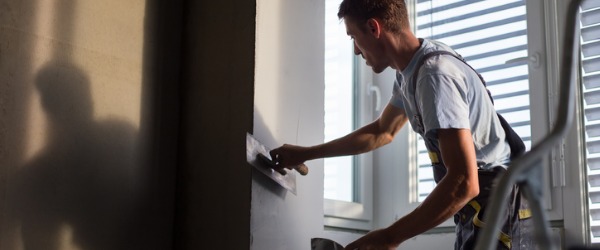What is a Plasterer?
A plasterer is someone who applies coats of plaster or stucco to walls, ceilings, or partitions for functional and decorative purposes. The vast majority of plasterers are employed in the specialty trade contractors industry. About 53% are employed in the drywall and insulation contractors industry, while 15% are employed in the masonry contractors industry. An additional 11% are self-employed.
Get online training through our partner:
What does a Plasterer do?

Plasterers typically do the following:
- Clean and prepare surfaces
- Nail a wire mesh to the surface to ensure the plaster or stucco stays in place
- Mix plaster and stucco to desired consistency
- Apply two or three coats of plaster or stucco using trowels, brushes, or spray guns
- Rough the undercoat surface with a scratcher so the finish coat will stick
- Create decorative textures using brushes, trowels, sand, or stones
- Apply sealants or waxes to protect the finish and allow for easy cleaning
Plasterers apply coats of plaster to interior walls and ceilings to form fire-resistant and relatively soundproof surfaces. Using trowels, workers spread plaster on solid surfaces, such as concrete block, or supportive wire mesh called lath. They also may apply plaster over drywall to create smooth or textured scratch-resistant finishes. Using molds and a variety of troweling techniques, some plasterers make decorative and ornamental designs, which require special skills and creativity. They may also install prefabricated exterior insulation systems over existing walls—for good insulation and interesting architectural effects—and cast ornamental designs in plaster.
What is the workplace of a Plasterer like?
Like many other construction trades, the work of plasterers is physically demanding. They spend most of the day on their feet, either standing, bending, or stretching. Plasterers must hold plaster in one hand using a hawk—a square board with a handle on the bottom—while troweling with the other hand, and the plaster can be heavy. Plasterers may also work on ladders or scaffolding, occasionally up high.
The work can often be dusty and dirty, which can irritate the skin, eyes, and lungs. Workers usually wear protective masks, goggles, and gloves to reduce the effects of these problems. Although the work is not inherently dangerous, plasterers experience a rate of injury and illness that is higher than the national average. Muscle strain from lifting heavy plaster and stucco is the most common injury, and workers sometimes fall from ladders or scaffolds.
Plasterers are also known as:
Journeyman Plasterer
Apprentice Plasterer
Artisan Plasterer